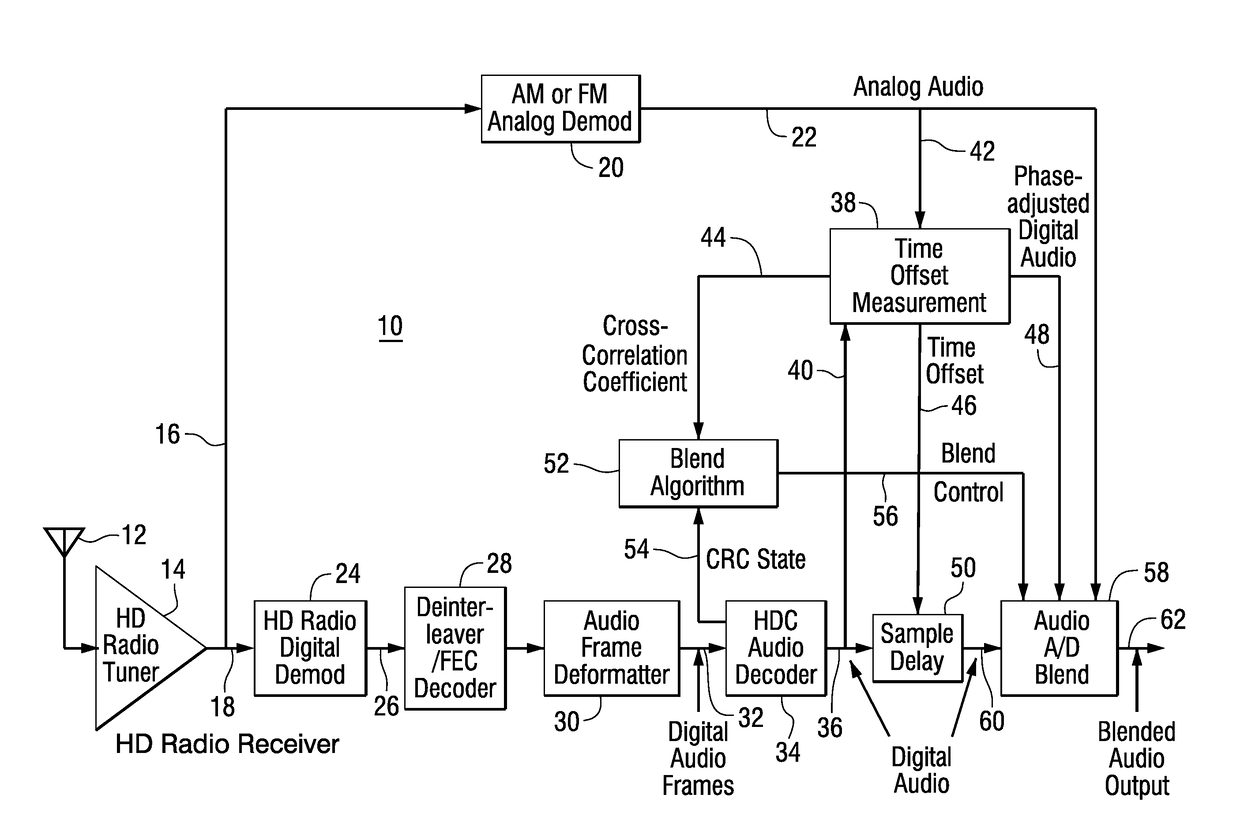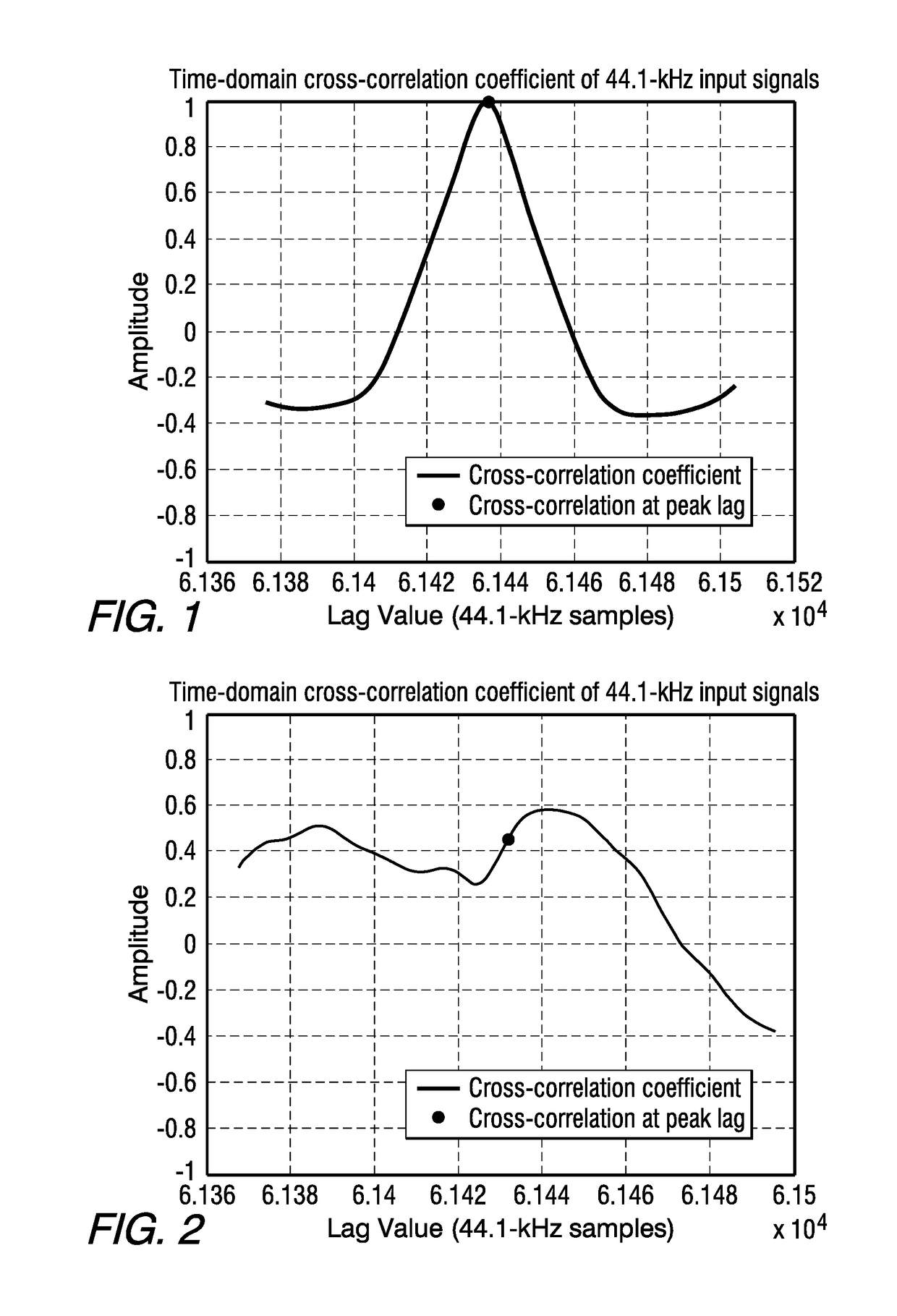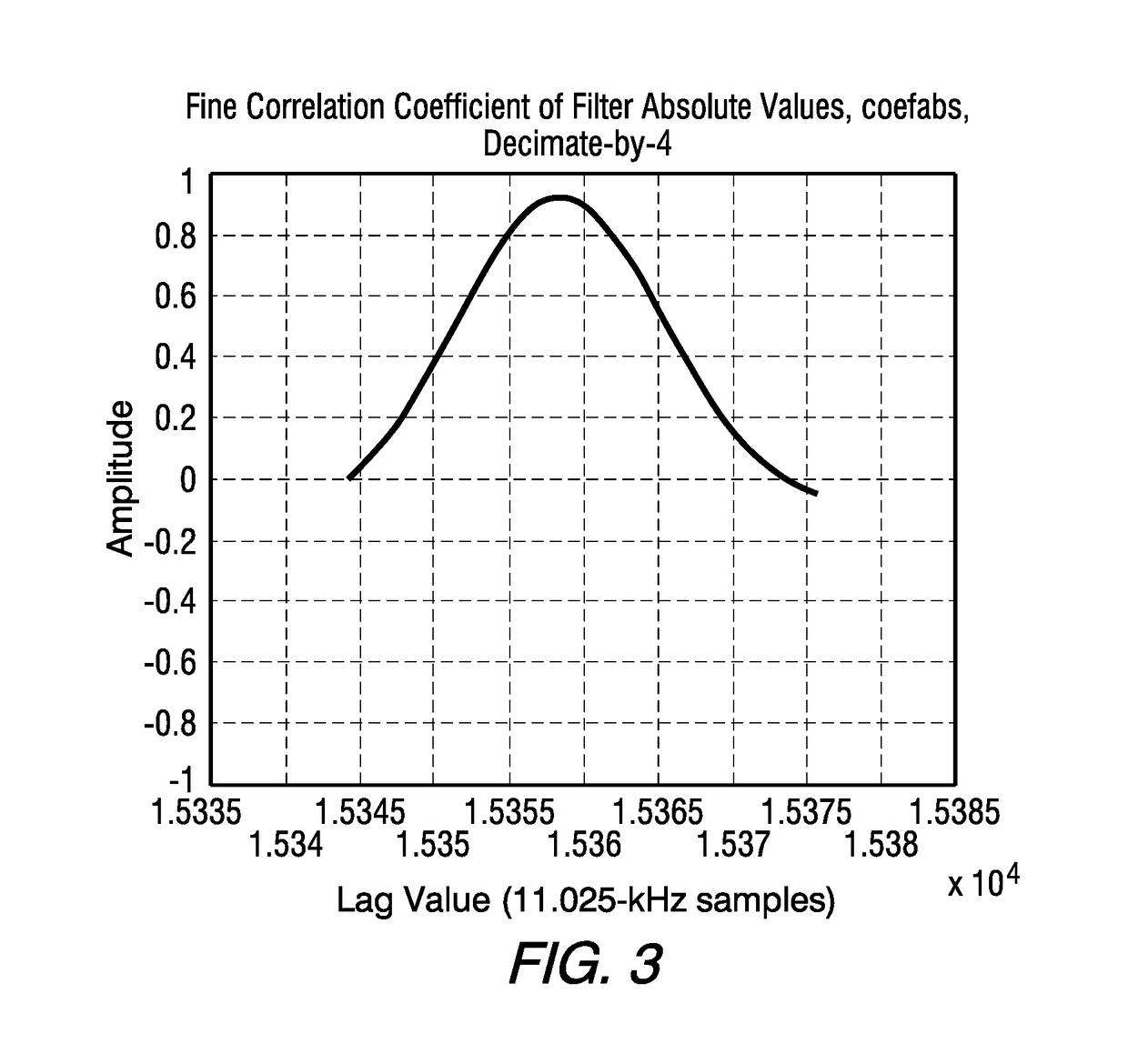Time-alignment measurement for hybrid HD radio™ technology
a hybrid digital radio and time alignment technology, applied in the field of time alignment of analog and digital pathways in hybrid digital radio systems, can solve the problems of harsh sounding transition between digital and analog audio, affecting the alignment of these two signals, and affecting the accuracy of the signal alignmen
- Summary
- Abstract
- Description
- Claims
- Application Information
AI Technical Summary
Benefits of technology
Problems solved by technology
Method used
Image
Examples
Embodiment Construction
[0026]Embodiments described herein relate to the processing of the digital and analog portions of a digital radio broadcast signal. This description includes an algorithm for time alignment of analog and digital audio streams for an HD Radio receiver or transmitter. While aspects of the disclosure are presented in the context of an exemplary HD Radio system, it should be understood that the described methods and apparatus are not limited to HD Radio systems and that the teachings herein are applicable to methods and apparatus that include the measurement of time offset between two signals.
[0027]Previously known algorithms for time alignment of analog and digital audio streams rely on locating a normalized cross-correlation peak generated from the analog and digital audio sample vectors. When the analog and digital audio processing is the same, a clearly visible correlation peak usually results. For example, FIG. 1 is a graph of a typical normalized cross-correlation peak with identi...
PUM
 Login to View More
Login to View More Abstract
Description
Claims
Application Information
 Login to View More
Login to View More - R&D
- Intellectual Property
- Life Sciences
- Materials
- Tech Scout
- Unparalleled Data Quality
- Higher Quality Content
- 60% Fewer Hallucinations
Browse by: Latest US Patents, China's latest patents, Technical Efficacy Thesaurus, Application Domain, Technology Topic, Popular Technical Reports.
© 2025 PatSnap. All rights reserved.Legal|Privacy policy|Modern Slavery Act Transparency Statement|Sitemap|About US| Contact US: help@patsnap.com



